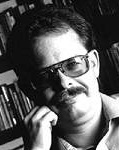- Review of Experimental Concepts for Studying the Quantum Vacuum Field (2006) [Updated 8 years ago]
- An Assessment of Faster-Than-Light Spacetimes: Make or Break Issues (2006) [Updated 8 years ago]
- Experimental Concepts for Generating Negative Energy in the Laboratory (2006) [Updated 8 years ago]
- Levi?Civita Effect in the Polarizable Vacuum (PV) Representation of General Relativity (2005) [Updated 8 years ago]
- Teleportation Physics Study (2004) [Updated 8 years ago]
- Review of Experimental Concepts for Studying the Quantum Vacuum Field (2006) [Updated 8 years ago]
We review concepts that provide an experimental framework for exploring the possibility and limitations of accessing energy from the space vacuum environment. Quantum electrodynamics (QED) and stochastic electrodynamics (SED) are the theoretical approaches guiding this experimental investigation. This investigation explores the question of whether the quantum vacuum field contains useful energy that can be exploited for applications under the action of a catalyst, or cavity structure, so that energy conservation is not violated. This is similar to the same technical problem at about the same level of technology as that faced by early nuclear energy pioneers who searched for, and successfully discovered, the unique material structure that caused the release of nuclear energy via the neutron chain reaction.
- An Assessment of Faster-Than-Light Spacetimes: Make or Break Issues (2006) [Updated 8 years ago]
42nd AIAA/ASME/SAE/ASEE Joint Propulsion Conference & Exhibit 9 - 12 July 2006, Sacramento, California. Implementation of faster-than-light (FTL) interstellar travel via traversable wormholes, warp drives, or other spacetime modification schemes generally requires the engineering of spacetime into very specialized local geometries. The analysis of these via Einstein's General Theory of Relativity plus the resultant equations of state demonstrates that such geometries require the use of "exotic" matter. It has been claimed that since such matter violates the energy conditions FTL spacetimes are not plausible. However, it has been shown that this is a spurious issue. The identification, magnitude, and production of exotic matter is seen to be a key technical challenge, however. FTL spacetimes also possess features that challenge the notions of causality, and there are alleged constraints placed upon them by quantum effects. These issues are reviewed and summarized, and an assessment on the present state of their resolution is provided.
- Experimental Concepts for Generating Negative Energy in the Laboratory (2006) [Updated 8 years ago]
Implementation of faster-than-light (FTL) interstellar travel via traversable wormholes, warp drives, or other spacetime modification schemes generally requires the engineering of spacetime into very specialized local geometries. The analysis of these via Einstein's General Theory of Relativity (GTR) field equations plus the resultant equations of state demonstrate that such geometries require the use of "exotic" matter in order to induce the requisite FTL spacetime modification. Exotic matter is generally defined by GTR physics to be matter that possesses (renormalized) negative energy density, and this is a very misunderstood and misapplied term by the non-GTR community. We clear up this misconception by defining what negative energy is, where it can be found in nature, and we also review the experimental concepts that have been proposed to generate negative energy in the laboratory.
- Levi?Civita Effect in the Polarizable Vacuum (PV) Representation of General Relativity (2005) [Updated 8 years ago]
The polarizable vacuum (PV) representation of general relativity (GR), derived from a model by Dicke and related to the ?THe ? ? formalism used in comparative studies of gravitational theories, provides for a compact derivation of the Levi?Civita effect (both magnetic and electric), herein demonstrated.
- Teleportation Physics Study (2004) [Updated 8 years ago]
This study was tasked with the purpose of collecting information describing the teleportation of material objects, providing a description of
teleportation as it occurs in physics, its theoretical and experimental status, and a projection of potential applications. The study also consisted
of a search for teleportation phenomena occurring naturally or under laboratory conditions that can be assembled into a model describing the
conditions required to accomplish the transfer of objects. This included a review and documentation of quantum teleportation, its theoretical
basis, technological development, and its potential applications. The characteristics of teleportation were defined and physical theories were
evaluated in terms of their ability to completely describe the phenomena. Contemporary physics, as well as theories that presently challenge the
current physics paradigm were investigated. The author identified and proposed two unique physics models for teleportation that are based on
the manipulation of either the general relativistic spacetime metric or the spacetime vacuum electromagnetic (zero-point fluctuations)
parameters. Naturally occurring anomalous teleportation phenomena that were previously studied by the United States and foreign
governments were also documented in the study and are reviewed in the report. The author proposes an additional model for teleportation that
is based on a combination of the experimental results from the previous government studies and advanced physics concepts. Numerous
recommendations outlining proposals for further theoretical and experimental studies are given in the report. The report also includes an
extensive teleportation bibliography.



